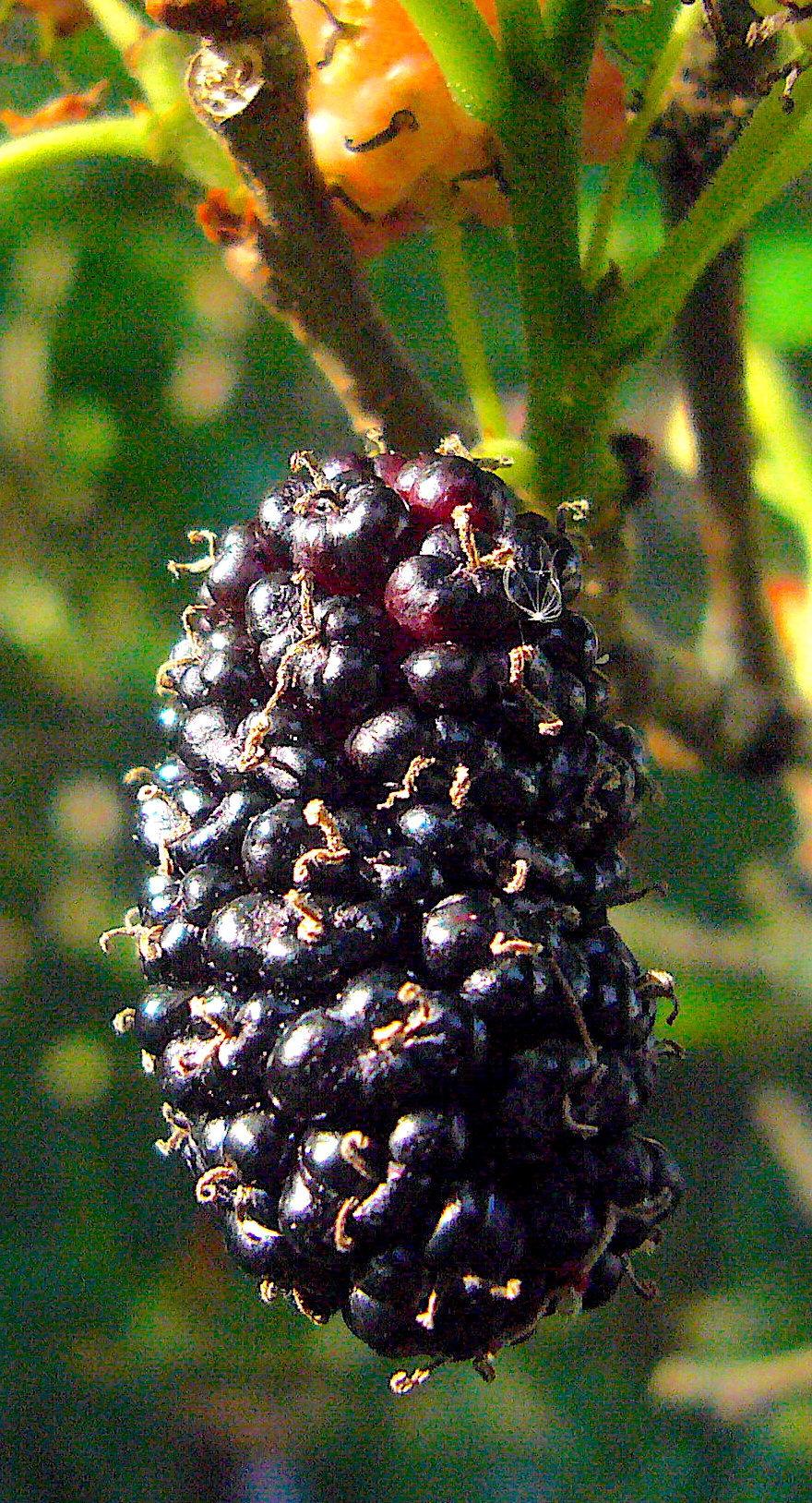
Mulberries are an aggregate fruit, each little bump is a separate fruit. Photo by Green Deane
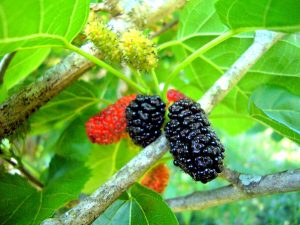
Mulberries ripen from green to dark purple.
Because of some early warm weather the Red Mulberries are ahead a schedule by a several weeks. There aren’t many ripe ones yet but many trees are heavy with unripe fruit. A native from Massachusetts south to Florida and west to Texas, it likes good soil and full sun. Mulberries can be found in woodlands, pastures, fields, rocky places, beside roads and staining sidewalks with their fruit. Among the identifying characteristics are a milky sap and a fruit that looks like a long blackberry. On young branches the leaves are often lobed, on older wood without lobs. Mulberries reproduce very easily. Cut off a finger sized branch two or three feet long, take off lower leaves, stick it in a pot with good soil or in the ground. Chances are it will take off. I trimmed a mulberry one year and used the four foot branches to prop up low limbs on a peach tree. All the props took root and later had to be moved. The fruit can be eaten off the tree, made into wine, jelly and jam, and the wood is good for smoking meat. Young leaves cooked are also edible. To read more about the mulberry go here.
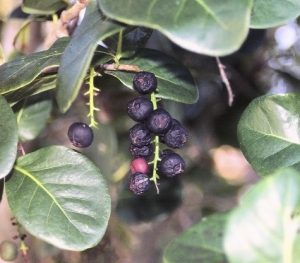
Pigeon Plums taste better after they dry.
Nearly everyone who spends anytime in Florida and thereabouts hears about the Seagrape, which has edible fruit. Often overlooked is a close relative, Coccoloba diversifolia, the Pigeon Plum also called the Dove Plum. It’s a common coastal tree in that it is resistant to wind and is salt tolerant. It can take a hurricane and does well in sandy, or broken coral soils or even limestone near tidewater areas. Technically the fruit is a drupe, like plums and olives. One can eat them off the tree when ripe but they are astringent. However once the fruit dries the flesh is sweet and rehydrates without the pucker factor. Usually the best ones are the shriveled but still soft found on the ground. At first glance they look black when ripe but are really dark red or purple. Leaves have been used to treat gastrointestional issues and the wood is good for carving. You can read about the Pigeon Plum here.
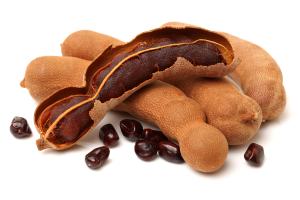
Tamarinds are sweet and sour.
Also heavy in fruit now is the Tamarind, if you’re in south Florida. Tamarindus indica is from warm Africa but I see them regularly in West Palm Beach. On a wider scale it is commonly found in South Asia, Mexico and India which is the world largest producer of the legume. Tamarind’s nutritious pods are consumed raw or cooked and is one of the current flavor darling of many avant-garde restaurants. The flavor is distinctive, both sweet and sour. The tree itself is slow-growing and long-lived. Without its annual pods the evergreen tree can easily hide; it’s moderate in size and not too distinct. The other interesting part is that most of the trees in the greater legume group are toxic with some notable exceptions, the Tamarind being one and the Eastern Red Bud another. Generally pea trees don’t offer much to the forager. The Tamarind, by the way is monotypic, that is, it is the only plant in its genus. It’s name is from the Arabic Tamar Hindi, which means “Indian Date.” It was brought to the New World in the 1500’s. They are high in Iron, Magnesium, and the anti-oxidant Tartaric Acid.
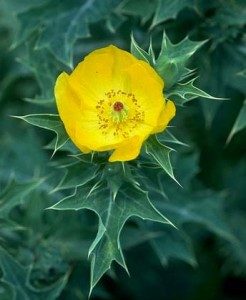
NOT EDIBLE: Mexican Poppy
No, it’s not edible. Depending on the weather I receive numerous emails wanting me to identify a yellow- or white-blossomed prickly plant. It’s almost always Argemone mexicana, the Mexican Poppy. Some years they bloom as early as Christmas or can still be blossoming in March. The species is found in dry areas in much of eastern North America avoiding some north mid-west states and northern New England. Highly toxic, the Mexican Poppy tastes bad so accidental poisonings amongst man or beast are few. However people have tried to use its seeds for cooking oil resulting in severe edema (water retention.) Herbalists, however, use the plant extensively (which brings up the importance of knowing what you’re doing.) Toxicity reportedly occurs only when large quantities are ingested and the plant might have rural uses in treating malaria. In one study it helped three quarters of the patients but did not completely get rid of the parasitic load. The most common places to see the very prickly plant is beside roads and railroad tracks.

Foraging classes are held rain, shine, hot or cold. Photo by Nermina Krenata
Foraging Classes: Classes this past week ranged from Orlando to West Palm Beach. While we saw a lot of edibles locally we also noticed that the deadly Water Hemlock is growing fast. Definitely a plant to avoid. You can read about it here. And in south Florida we always get a chance to see more frost-intolerant species like the Tamarind and Pigeon Plum. This week I am on the north side of the state. Predictions are it won’t be too cold.
Saturday, March 24th, Florida State College, south campus, 11901 Beach Blvd., Jacksonville, 32246. 9 a.m. We will meet at building “D” next to the administration parking lot.
Saturday, March 31st, Wickham Park, 2500 Parkway Drive, Melbourne, FL 32935-2335. Meet at the “dog park” inside the park, 9 a.m.
Sunday, April 1st, Boulware Springs Park, 3420 SE 15th St., Gainesville, FL 32641. Meet at the picnic tables next to the pump house, 9 a.m.
Saturday April 7th, Colby-Alderman Park: 1099 Massachusetts Street, Cassadaga. Fla. 9 a.m., meet near the restrooms.
Sunday April 8th, Eagle Park Lake, 1800 Keene Road, Largo, FL 33771. 9 a.m. Meet at the pavilion near the dog park
Saturday, April 14th, Blanchard Park, 10501 Jay Blanchard Trail, Orlando, FL 32817. 9 a.m. Meet at the pavilion east of the tennis courts near the YMCA.
Sunday, April 15th, Red Bug Slough Preserve, 5200 Beneva Road, Sarasota, FL, 34233, 9 a.m.
Saturday, April 22nd, Spruce Creek, 6250 Ridgewood Ave. Port Orange, 32127, 9 a.m., meet at the pavilion.
To read more about the classes or to pre-pay go here.

The Nine DVD set includes 135 videos.
All of Green Deane’s videos available for free on You Tube. They do have ads on them so every time you watch a Green Deane video I get a quarter of one cent. Four views, one cent. Not exactly a large money-maker but it helps pays for this newsletter. If you want to see the videos without ads and some in slightly better quality you can order the DVD set. It is nine DVDs with 15 videos on each for a total of 135 videos. Many people want their own copy of the videos or they have a slow service and its easier to order then to watch them on-line. The DVDs make a good gift for that forager you know especially on long, cold winter months. Individual DVDs can also be ordered or you can pick and choose. You can order them by clicking on the button on the top right hand side of this page (if your window is open wide enough.) Or you can go here

Green Deane Forum
Want to identify a plant? Looking for a foraging reference? Do you have a UFO, an Unidentified Flowering Object you want identified? On the Green Deane Forum we chat about foraging all year. And it’s not just about warm-weather plants or just North American flora. Many nations around the world share common weeds so there’s a lot to talk about. There’s also more than weeds. The reference section has information for foraging around the world. There are also articles on food preservation, and forgotten skills from making bows to fermenting food. One special section is “From the Frightening Mail Bag” where we learn from people who eat first then ask questions later. Recent topics include: Bacopa monnieri, Herbalist Question, Bittercress?, Pine Pollen, Pawpaw? Thistle Flower Buds, Gigantic Pony Foot, Beach Carpet? Lots of Smilax and early Grapes Showing UP, Some Kind Of Pennywort, Plants Called Bugle, and Partridgeberry. You can join the forum by clicking on “forum” in the menu.
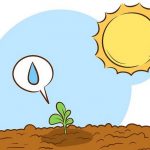 Donations to upgrade EatTheWeeds.com and fund a book are going well and has made the half way mark, $5,500. Thank you to all who have contributed to either via the Go Fund Me link, the PayPal donation link or by writing to Green Deane POB 941793 Maitland FL, 32794. Recent upgrades have been paid now the Forum needs work and several function problems need to be fixed specifically the search and categories ( a partial solution is that when you do a search other finds are directly below the main one shown. Scroll down.) A new server also has to be found by April. The other issue is finding an indexing program or function for a real book. Writing programs used to do it automatically if you designated a term for indexing. Now that most books are ebooks most writing programs do not provide and indexing function. The hunt continues.
Donations to upgrade EatTheWeeds.com and fund a book are going well and has made the half way mark, $5,500. Thank you to all who have contributed to either via the Go Fund Me link, the PayPal donation link or by writing to Green Deane POB 941793 Maitland FL, 32794. Recent upgrades have been paid now the Forum needs work and several function problems need to be fixed specifically the search and categories ( a partial solution is that when you do a search other finds are directly below the main one shown. Scroll down.) A new server also has to be found by April. The other issue is finding an indexing program or function for a real book. Writing programs used to do it automatically if you designated a term for indexing. Now that most books are ebooks most writing programs do not provide and indexing function. The hunt continues.
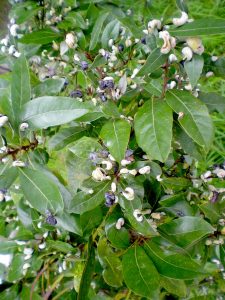
Persea borbonia (the Red Bay) often has many leaf galls.
There are four Perseas locally: P. humilis, P. borbonia, P. palustris and P. americana. The first and the last are easy to identify. The last one, P. americana, is the avocado of various cultivars. The first, P. humilis, the Silk Bay, only grows in the upper dry ground in the middle of Florida and is bronze-colored on the under leaf. You can use those leaves for flavoring. P. borbonia, and P. palustris were one species previously. Their differences can be minute or blatantly obvious. Here’s how to tell them apart: First get a microscope… well, not totally necessary but… Generally P. palustris, the Swamp Bay, grows near water or in damp soil and can get 20 to 30 feet high, occasionally more. P. borbonia, the Red Bay, grows where it is less wet and can get to 65 feet. The leaves are aromatic in both species, look very much alike to the naked eye, and are used the same way, as a tea, marinade or flavoring. A #10 hand loop, the mainstay of the forager in the field, is not quite strong enough to tell the difference. 30x works very well.
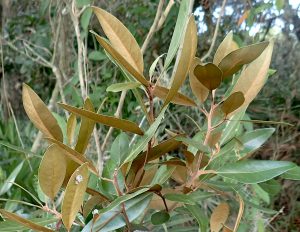
Persea humilis, the Silk Bay, has leaves that are bronze colored on the back.
Under a microscope at 30X the difference is clear. Both species have hair on the petiole, on the main stem on the underside of the leaf, and on the underside of the leaf itself. On the P. borbonia the hairs are sparse and or lay down, think balding and slicked back. On the P. palustris the hairs are many and upright, bushy, think afro. While weather may often make identification characteristics on the petioles difficult the main stem on the underside of the leaf is very consistent. Bushy tiny hairs, P. palustris, slicked down or few hairs, P. Borbonia. Simple perhaps but it took me several years to sort it out. It was also an excuse to buy a specimen microscope. One other Persea point: I have found P. palustris growing in very dry conditions on high ground around lakes, read no where near damp conditions. Whereas all the P. borbonias I have found have not been near any water. They’ve all been high and dry. Lastly P. borbonia often is infected with leaf galls, P. palustris usually is not. You can read more about the Perseas here.
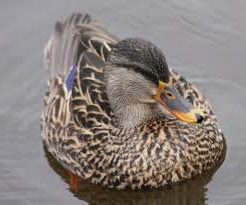 For what its worth: Male ducks don’t quack. Only female ducks quack, male ducks “whisper.” Thus whenever you hear a “quack” it is a she. And… the easiest way to catch park ducks… is with a cast net. Incidentally, ducks, unlike chickens, will lay their egg where ever they are, unless sitting. Whereas a chicken will always lay in the same place, a duck will drop an egg whenever so moved. So if you want duck eggs and you raise ducks you have to keep them enclosed until they lay for the day. On a personal note I have raised chickens and ducks. Of the two, ducks have far more personality and are more engaging than chickens. Admittedly watching a chicken grub for bugs is entertaining but ducks are an intellectual cut above. They are precocial whereas chickens are altricial. (Baby ducks can pretty much take care of themsevles, whereas baby chicks need nurturing.) My favorite ducks were Khaki-campbells, good layers who don’t need a pond of water to propagate. You can read about these ducks here.
For what its worth: Male ducks don’t quack. Only female ducks quack, male ducks “whisper.” Thus whenever you hear a “quack” it is a she. And… the easiest way to catch park ducks… is with a cast net. Incidentally, ducks, unlike chickens, will lay their egg where ever they are, unless sitting. Whereas a chicken will always lay in the same place, a duck will drop an egg whenever so moved. So if you want duck eggs and you raise ducks you have to keep them enclosed until they lay for the day. On a personal note I have raised chickens and ducks. Of the two, ducks have far more personality and are more engaging than chickens. Admittedly watching a chicken grub for bugs is entertaining but ducks are an intellectual cut above. They are precocial whereas chickens are altricial. (Baby ducks can pretty much take care of themsevles, whereas baby chicks need nurturing.) My favorite ducks were Khaki-campbells, good layers who don’t need a pond of water to propagate. You can read about these ducks here.
This is weekly issue 296. A thunderous storm front pushed the publication back from Tuesday afternoon to Wednesday morning.
If you would like to donate to Eat The Weeds please click here.


Concerning Tamarindus indica, let me add to the constituents in the fruit ,malik acid, thyamin, pyrodoxin, vitamin C , invert sugar,gum&complex polysaccarides i.e. pectin plus the fibers. I’ve practised using tamarind’s concentrated juice obtained by soaking the fruit in water for afew hours, filter and add to the gently heated sugary material of the kind of jam wanted. I’ve attempted : mango, pomegranata,and pumpkin – all gone well . Here in my country, Sudan , tamarind fruit is well known for use as beaverage espcially during fasting month ” Ramadan ” .Interstingly, the fruit’s juice has been used as cure for malaria – incidents documenented 1983 – 1984 in Gedarif Hospital ( eastern Sudan ) .
Thank you for your continuous effort in educating people in aspects of much relevance to environment . Please tell me if you agree with those considering tamarindus same as Winter thorn or same as Faida herbia .
Interestingly , I’ve used the colloidal solution of tamaridus fruit in place of pectin in making jam of : mango , pomogrenata and pumpkin .